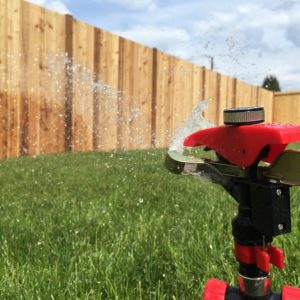Utah Lawn Grass Varieties
With different weathers and climates, different varieties of grass thrive. In Utah, our seasons range from extreme cold to extreme heat, sometimes faster than we would like! Below, we’ll discuss a few different categories of grass that thrive in different climates. This will help you find a grass type that will keep your lawn looking greener longer during the warmer seasons.
Grass divides into two main categories: cool season and warm season. Most lawns in central Utah are filled with cool season grasses because of our brisk winters. Some of these include: Kentucky bluegrass, tall fescue and fine fescue, and perennial ryegrass.
Kentucky bluegrass is very popular because it withstands traffic extremely well. However, it doesn’t thrive in very shady areas. This is the most common variety of grass used in Utah lawns.
Tall fescue and fine fescue are good all-around grasses. They tolerate shade and heat better than other varieties of cool season grasses. Their deep root system helps them withstand dry, drought conditions during the peak of summer. Fine fescue struggles to withstand heavy traffic though it will grow well in even poor soils. Tall fescue grows in coarser clumps than other grass types which often looks less appealing.
Perennial ryegrass looks extremely professional in a lawn but requires more upkeep and maintenance. Because it needs more caire, it is often mixed with other grass types such as Kentucky bluegrass. It then adds diversity and a beautiful dark green color without causing excessive work and care.
 Some central Utah lawns may even mix in a variety of warm season grass. This will offset the struggling cool season grasses during the heat of summer. Warm season grasses alone wouldn’t thrive during spring and fall weather but if you feel your lawn struggles to maintain its beauty during the hottest months, consider mixing in a little buffalograss, Bermuda grass, or Zoysiagrass. While they won’t grow well during much of the season, they may help to protect your cool season grasses as the temperature rises.
Some central Utah lawns may even mix in a variety of warm season grass. This will offset the struggling cool season grasses during the heat of summer. Warm season grasses alone wouldn’t thrive during spring and fall weather but if you feel your lawn struggles to maintain its beauty during the hottest months, consider mixing in a little buffalograss, Bermuda grass, or Zoysiagrass. While they won’t grow well during much of the season, they may help to protect your cool season grasses as the temperature rises.
In order to keep your cool season grass lawn from dying (going dormant) during the summer months, water well and mow high. This will keep the roots happy so even if your lawn struggles a little, it will return to full beauty quickly when the temperature begins to fall.
The important part to remember is to choose a variety (or two or three!) that will work well with your soil type, shaded areas, and water allotment. Mixing grass types is a great way to insure you will have a more healthy looking beautiful lawn in more seasons and weathers. As one struggles, another can make up the deficit.
And as always, feel free to call VIRIDIS Lawn Care at (801) 367-9961 for help with your lawn’s care and maintenance.





Sorry, comments are closed for this post.